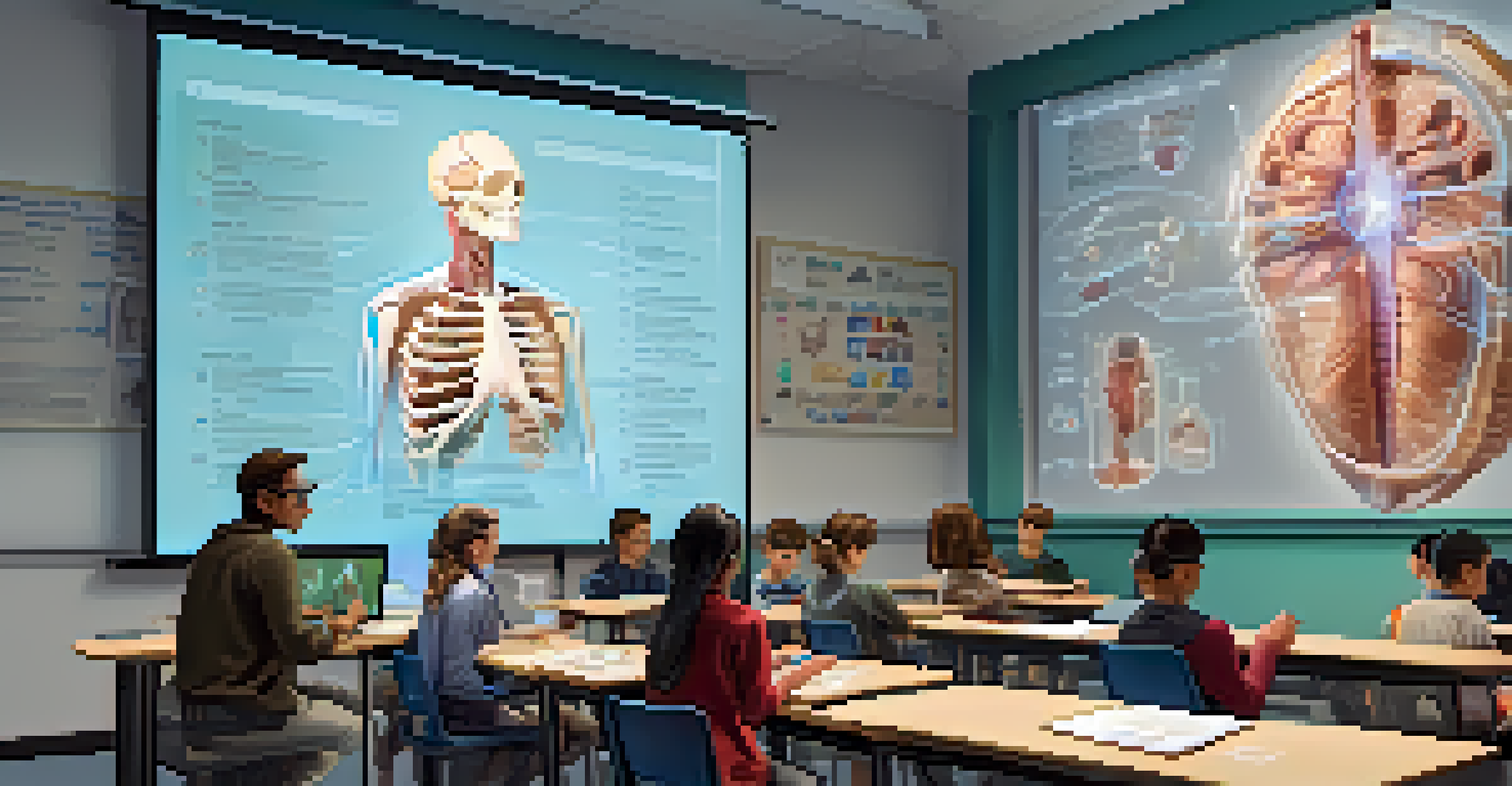Mobile Learning for Higher Education: Engaging College Students

Understanding Mobile Learning in Higher Education
Mobile learning, often referred to as m-learning, leverages mobile devices to facilitate educational experiences. This approach allows students to access course materials anywhere, anytime, breaking down traditional classroom barriers. Imagine a student commuting to class, able to review lecture slides or participate in discussions from their smartphone.
Mobile learning is not a trend; it is the way we teach and learn in the 21st century.
The integration of mobile platforms in education not only increases accessibility but also enhances the learning experience. With the rise of mobile technology, students are increasingly expecting flexible and interactive learning environments. This shift aligns with the digital habits of today's college students, who often rely on their devices for information and communication.
In essence, mobile learning is about meeting students where they are. By harnessing the power of smartphones and tablets, educators can create immersive and engaging learning opportunities that resonate with the lifestyles of modern learners.
The Benefits of Mobile Learning for College Students
Mobile learning offers a plethora of benefits that can significantly enhance the college experience. For starters, it promotes personalized learning, allowing students to progress at their own pace. This means that whether they are struggling with a concept or want to delve deeper, they can find resources tailored to their needs.

Additionally, mobile learning fosters collaboration among peers. Students can easily connect through apps or platforms, sharing ideas and resources in real-time, which enriches their learning environment. Picture a group of students working on a project, using a shared mobile app to brainstorm and collaborate, no matter where they are.
Mobile Learning Enhances Accessibility
Mobile learning allows students to access educational materials anytime and anywhere, breaking down traditional classroom barriers.
Furthermore, mobile learning encourages engagement through interactive content. Quizzes, videos, and gamified elements make learning more appealing, transforming what could be a monotonous task into an exciting challenge. This level of engagement is crucial for keeping students motivated and invested in their education.
Key Technologies Driving Mobile Learning
Several technologies are pivotal in the evolution of mobile learning. Learning Management Systems (LMS) have adapted to mobile formats, allowing students to access coursework seamlessly. Tools such as Moodle and Blackboard have mobile apps that keep students connected to their courses and assignments.
Technology is best when it brings people together.
Additionally, mobile apps designed specifically for educational purposes have gained traction. These apps provide resources ranging from flashcards to interactive simulations, tailoring the learning experience to individual preferences. For instance, a student can use a flashcard app to study vocabulary while waiting for a bus.
Moreover, social media platforms play a significant role in mobile learning. They provide spaces for discussion and collaboration, enabling students to share insights and ask questions in informal settings. This integration of social tools creates a sense of community, making learning feel more connected and less isolating.
Challenges of Implementing Mobile Learning
While mobile learning has numerous advantages, it also comes with its own set of challenges. One major hurdle is ensuring that all students have access to the necessary technology and reliable internet connectivity. Not all students possess high-end devices, which can create disparities in learning opportunities.
Another challenge lies in the development of engaging and effective mobile content. Educators must invest time and resources into creating materials that truly resonate with students in a mobile format. This requires a shift in thinking, moving away from traditional lecture notes to more interactive and visually appealing content.
Collaboration Boosts Learning Engagement
Mobile learning fosters real-time collaboration among students, enriching their educational experience through shared resources and ideas.
Lastly, there's the risk of distractions. With countless apps and notifications vying for attention, students may find it challenging to stay focused. Educators need to guide students on how to use their devices effectively for learning, fostering habits that prioritize education over distractions.
Best Practices for Mobile Learning Implementation
To harness the full potential of mobile learning, educators should follow best practices during implementation. First and foremost, it’s crucial to choose the right tools that align with learning objectives. This involves evaluating various platforms and apps to find those that enhance the curriculum rather than complicate it.
Engaging students in the development process can also lead to more effective mobile learning experiences. Gathering student feedback on what works and what doesn’t can help educators tailor content that meets their needs. This collaborative approach not only empowers students but also fosters a sense of ownership over their learning.
Finally, continuous training and support for both educators and students is essential. Providing workshops or resources on how to effectively use mobile technology can greatly enhance its adoption. By ensuring everyone is comfortable with the tools, the transition to mobile learning can be much smoother.
Case Studies of Successful Mobile Learning Programs
Looking at successful case studies can provide valuable insights into effective mobile learning strategies. For example, a university in California implemented a mobile app that allows students to access course materials and communicate with peers and instructors. The result was a 30% increase in student engagement, showcasing the app's effectiveness.
Another interesting case is a community college that adopted a mobile-first approach to its online courses. By designing courses specifically for mobile devices, they saw an increase in enrollment and retention rates. Students appreciated the flexibility, allowing them to juggle work and study commitments more easily.
Future Tech Will Transform Learning
Advancements in AR, VR, and AI are set to create more immersive and personalized educational experiences in higher education.
These examples highlight how thoughtful implementation of mobile learning can yield significant benefits. By providing tailored experiences that cater to students' needs, educational institutions can foster higher levels of engagement and success.
The Future of Mobile Learning in Higher Education
As technology continues to evolve, the future of mobile learning in higher education looks promising. We can expect advancements in augmented reality (AR) and virtual reality (VR) to create even more immersive learning experiences. Imagine a biology class where students can explore the human body in 3D through their devices.
Moreover, artificial intelligence (AI) is poised to play a significant role in personalizing learning experiences. AI-driven platforms could analyze student performance and adapt content accordingly, ensuring that each learner receives the support they need. This level of customization could revolutionize how students engage with their education.

Ultimately, mobile learning is set to transform higher education in unprecedented ways. By embracing these technological advancements, colleges and universities can create dynamic learning environments that truly engage students, preparing them for success in an increasingly digital world.